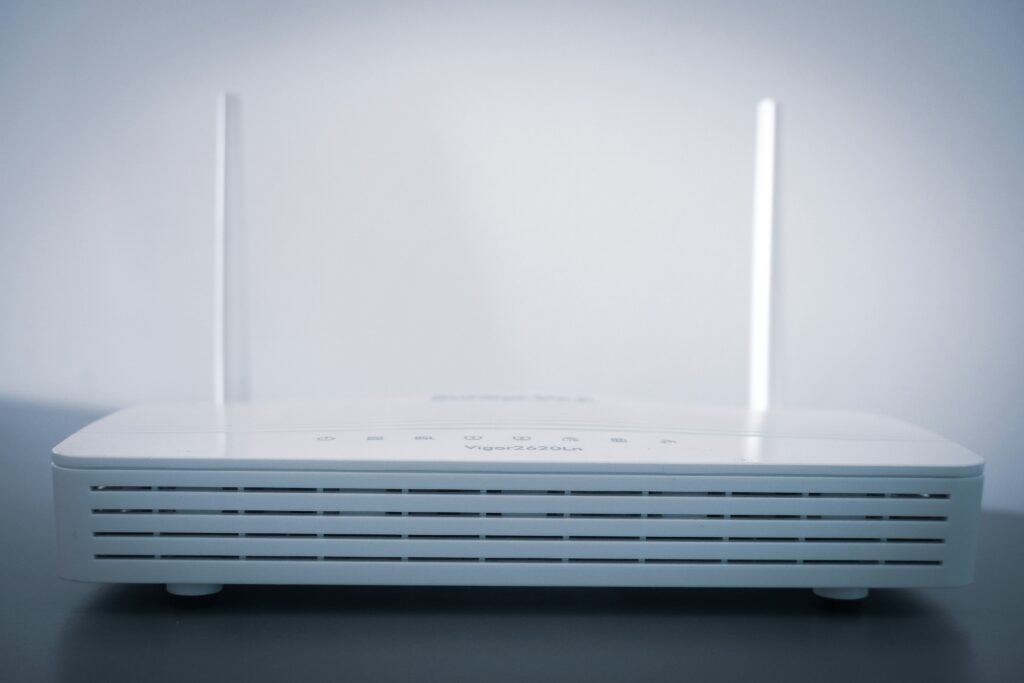
Ultimate Guide to Managing Your Default Router Password
In today’s interconnected world, ensuring the security and efficiency of our home networks is more crucial than ever. Routers, the gatekeepers of our digital domain, come with default passwords intended to kickstart our internet experience. However, understanding how to manage these credentials (e.g. router password) is key to maintaining a secure and smoothly functioning network. This guide provides an exhaustive overview of managing default passwords for popular router brands such as Asus, Linksys and Netgear.
Asus Routers: Secure Your Network Foundation
Identifying Your Default Network Credentials
For Asus router users, the journey to a secure network begins with locating your default network name (SSID) and password. These credentials are typically found on the bottom of your Asus router, labeled next to the 2.4GHz and 5GHz SSID fields. Additionally, the default network password is often placed beside a PIN CODE label.
Accessing Router Settings
Should you need to dive deeper into your settings or update your network password, accessing your Asus router’s configuration page is straightforward:
- Launch a web browser and enter
192.168.1.1into the address bar. - Navigate to the PIN code section to view or modify your network password.
In instances where the router’s IP address has been altered and forgotten, a quick look into your device’s settings will reveal the current IP.
Resetting to Factory Defaults
If accessing the router settings proves challenging, a factory reset might be necessary. This action reverts all configurations back to their original state, including the network password.
Default Router Admin Password
For administrative access, your Asus router’s default admin password is crucial. This password, found on the router’s underside, grants entry into the router dashboard, enabling advanced network management.
Linksys Routers: Streamlining Your Connectivity
Discovering Your Network Credentials
Linksys router owners can find their default network name and password on a sticker located at the bottom of the device. Look for the “Wireless Network” and “Wireless Password” labels for these details.
Admin Dashboard Access
The default router admin password, necessary for signing into the router dashboard, is also positioned on the bottom of your Linksys router. This access allows for comprehensive network customization and security settings adjustments.
Netgear Routers: Elevating Your Network Security
Locating Default Network Information
Netgear makes identifying your default network credentials simple. The WiFi Network Name (SSID) and Network Key (Password) are printed on the bottom of the router, ensuring easy setup and connection.
Default Admin Password
Accessing the Netgear router’s admin interface requires the default admin password, found next to the “Password” label on the router’s base. This level of access is essential for securing and managing your home network effectively.
In conclusion, managing your router’s default passwords is a fundamental step in securing and optimizing your home network. Whether you’re using an Asus, Linksys, or Netgear understanding how to access, reset, and configure your network credentials ensures a robust and secure internet experience. By following the detailed steps provided in this guide, users can confidently manage their network settings, ensuring a safe and efficient digital environment for all connected devices.
FAQ
Q: How can I find my router’s default password?
A: The default password for most routers is located on a sticker on the bottom of the device. It is typically listed next to labels such as “SSID,” “Network Key,” or “Wireless Password.”
Q: What should I do if I can’t access my router’s settings?
A: If you’re unable to access your router’s settings, you may need to perform a factory reset. This will revert all settings to their original state, including the default password. The reset button is usually found on the back of the router.
Q: Is it necessary to change my router’s default password?
A: Yes, changing your router’s default password is crucial for network security. Default passwords are easily guessable, making your network vulnerable to unauthorized access.
Q: How do I change my router’s default password?
A: Access your router’s admin dashboard through a web browser, usually by entering an IP address like 192.168.1.1. From there, navigate to the wireless or security settings to change your password.
Q: Can I recover my router’s password without resetting it?
A: If you’ve changed your router’s password and forgotten it, recovery without a reset is often not possible unless you’ve previously saved the configuration or password in a secure location.
Q: How often should I update my router’s password?
A: It’s advisable to update your router’s password every 3-6 months to maintain network security. Additionally, you should update it after adding new devices or removing access from previous users.
Vpn-1 edge x default ip address
The VPN-1 Edge X device typically uses a default IP address for initial setup and configuration. This address allows users to access the device’s web-based setup page for configuration changes, including VPN settings and network security adjustments.
Commonly, network devices like VPN-1 Edge X utilize standardized IP addresses such as 192.168.1.1 or 192.168.0.1 for initial access. However, it’s crucial to consult the device’s manual or official documentation for the exact address, as manufacturers may assign different default IPs for their products. Understanding the correct IP address is essential for configuring VPN settings and ensuring secure network connections.
To find the VPN-1 Edge X default IP address, firstly, consult your device’s manual or look for a label on the device itself. Typically, IP addresses such as 192.168.1.1 or 192.168.0.1 are used. Here’s how to proceed:
- Check the Manual: The most accurate source.
- Inspect the Device: For a label detailing the IP.
- Try Common Addresses: Enter common IPs into your browser.
After accessing the setup page, you can configure your network and VPN settings. For enhanced security and privacy, consider ForestVPN. It offers robust encryption and a wide range of servers worldwide, ensuring your online activities remain private.
Visit ForestVPN for secure, reliable VPN services that keep you protected online.


